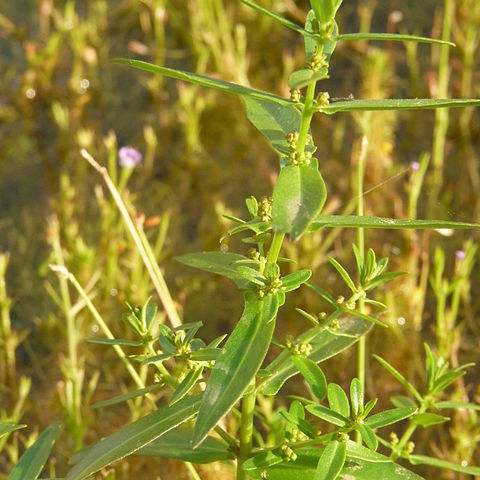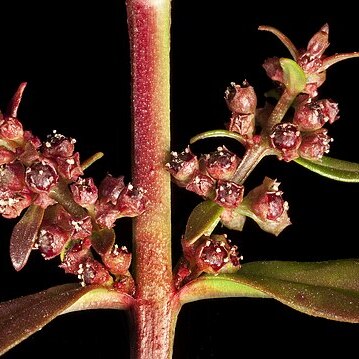Herbs, annual, 8-65 cm tall. Stems with numerous, ascending, short branches. Leaves opposite, narrowly elliptic, broadly linear, or lanceolate-oblong, 1-2.5 cm × 3-12 mm, base attenuate to cordate. Flowers 3-7(-20) in dense axillary cymes; pedicels 1-2[-6] mm; peduncle 1-2 mm; bracteoles linear, not reaching floral tube. Floral tube campanulate, ca. 1.5 mm, 4-ribbed; sepals 4, deltate. Petals 4, pink to whitish, obovate, minute. Stamens 4, rarely 6-8. Style 1/3-1/2 as long as ovary. Capsules red-brown or red-wine colored, ca. 1.5 mm in diam., ca. 1/2 exserted. Fl. Jul-Aug, fr. Sep. 2n = 18.
A herb. It is erect and grows each year from seed. It grows 10-60 cm high. The leaves are narrowly sword shaped. They are 3-40 mm long by 1-6 mm wide. The flowers are in groups of 3 or more. The flowers are red, pink and white.



